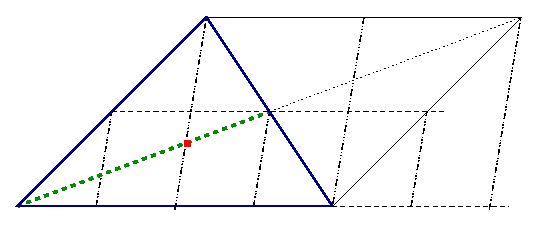
Once upon a time there was a triangle …
There is an infinity of tales on triangles. Or circles. Or conics. Some of them, though well known, I will try to tell once more, changing a word here and there.
As far as the center of gravity is concerned
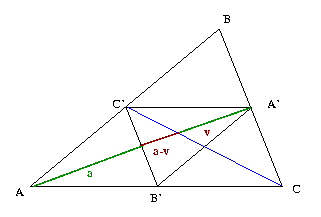
One can also realize it without really calculating, perhaps just counting
the number of equal segments:

The bisector of an angle between two sides of a triangle divides the third side into segments proportional to the sides that meet them in the vertices of the triangle.
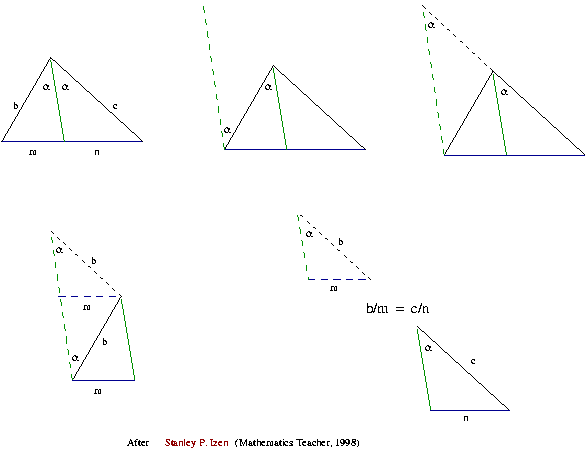

Finding the midpoint of an interval is the most elementary construction, right?

Archimedes' Broken Chord? Well, where does this name come from?
Well, it is just seven points, not a point. Bytes are cheaper than paper and I can afford to make a story somewhat longer. I get confused when the same sketch transmits many different arguments at the same time.
Perhaps not. Just take a look at four pictures below. The first of them introduces the notions. Two others show how to construct the tangent. The last one should convince you that the constructed line catches the ellipse in only one point.

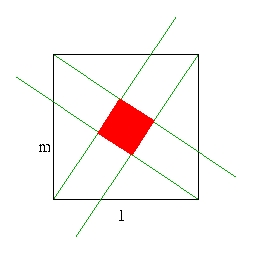
A part of its charm stems from the fact that there are really many ways to approach it. I used to suggest to my students that this solution
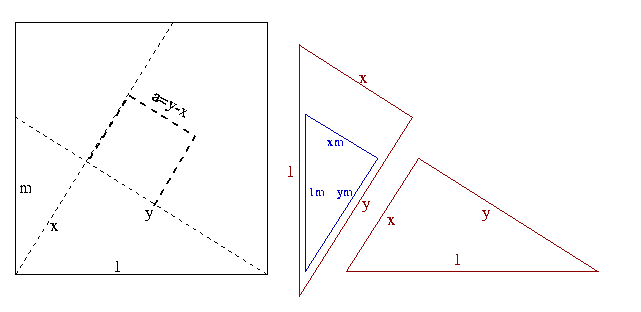
asked for a minimum of calculations: as x=ym, you use the Thales theorem to get a=y(1-m), then Pythagorean theorem gives you y2(m2+1)=1 and the final result
One day I realized that I have already seen a nice solution for the specific case of m=1/2; it appeared in one of the first issues of Revista do Professor de Matemática in the early eighties. The solution was attributed to Raul Neder Porrelli:
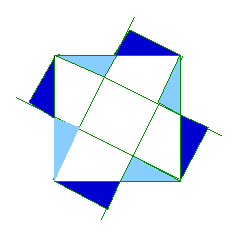
Exchanging light-blue triangles for dark-blue ones you see that there are 5 small squares in the big one.
Some more years passes and something led me to apply to myself the advice
that I always offer to my students (even if they do not ask for it): revisit
the old solutions, ask yourself why it worked. So I thought: the formula for
a looks like a tangent of a difference of some angles, why not to try
it once more - after all I know the angle if the value of the function
tan is 1 … Yes, the obsevation resulted in another, much
shorter, proof: if you name the angle  and give some cosmetic touches
and give some cosmetic touches

the you get something that is easier to visualize

and the new proof is ready to enter:

Obviously, I liked and I was ready to say it good-bye but then unexpectedly I met two articles on the Internet dealing with the very square: this one and one more. What a surprise … perhaps it is too early to say goodbye to my little friend?
My friend writes me:
If you discard the prolongation of half-lines that stick beyond the small square then you get the figure of Bhaskara's proof of Pythagorean theorem. (Sure. Shame on us not to note it.) By the way, the square appears also in nature.It does in fact - and the internal divisions are nicely used to point to different directories of the site:
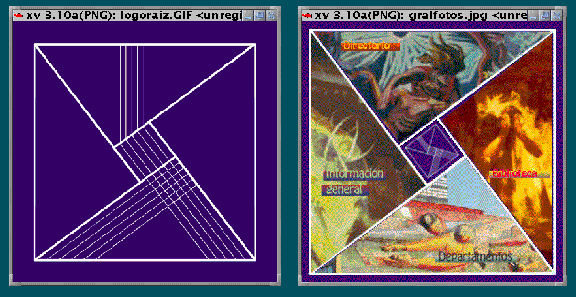
Moving in the other direction in time one finds the article “A Round-Up of Square Problem” by Duane Detemple and Sonia Harold in Mathematics Magazine, vol.69 (1, February 1996), p.15-27; in its turn it directs the reader to the article “Dörrie Tiles and Related Miniatures” by Edward Kitchen in Mathematics Magazine, vol.67 (2, April 1994), p.128-130; the case of m=1/2 solved just as I have found it in RPM stands there - but attributed to Heinrich Dörrie; the reference sends to his book Mathematische Miniaturen published in Breslau in 1943.

